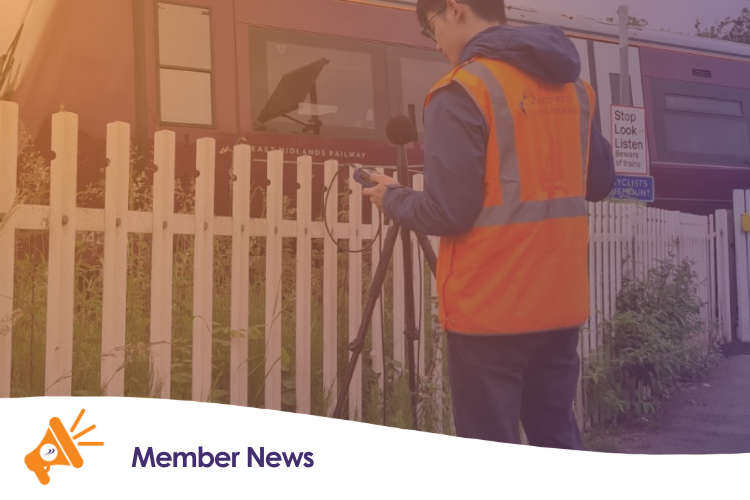For Rail Safety Week, we are putting the spotlight on acoustic risk – an invisible hazard
As the rail industry comes together to mark Rail Safety Week, Encompass Engineering reaffirms its commitment to safety, not just in terms of high-vis vests, hard hats, and hazard signage, but in safeguarding the whole person, body and mind. One of the most widespread yet often overlooked risks in our working environment is – noise.
From the movement of freight trains to the layered sounds within busy depots, noise on the railway isn’t just background, it’s a serious health and well-being concern. And for Rail Safety Week, we’re turning up the volume on why it matters.
The hidden impact of everyday noise
For many in the rail sector, noise has long been considered an inevitable part of the job. But science tells us otherwise. Prolonged exposure to even moderate levels of sound can contribute to hearing fatigue, reduce concentration, disrupt sleep, and elevate stress, all of which can increase the risk of accidents.
The unique acoustic environment of a railway depot is particularly complex. Here, alarms, engines, tannoy announcements, and clanging tools merge into a, sometimes, overwhelming soundscape. But it’s not just the loudest noises that pose a threat. Low-level, continuous sounds, such as the hum of machinery, ventilation fans or background radios, can quietly erode focus and contribute significantly to mental fatigue over time.
Reframing health and safety
As our understanding of workplace health evolves, so too must our definition of safety. Today, we recognise that mental clarity, emotional resilience, and cognitive well-being are just as essential as physical protection. Noise doesn’t only affect the ears, it affects how people think, feel, and function.
“When we look at safety holistically, environmental noise must be part of the conversation,” explains Alessandro Anelli, Environmental Specialist at Encompass Engineering. “Often, we see that the low-level noise sources are overlooked, such as background radio chatter, intermittent hums, and quiet mechanical whirs. Precisely because they’re quieter, these sounds are frequently underestimated and poorly managed.
Without proper mitigation or calibration, they can contribute disproportionately to overall noise fatigue, further complicating the acoustic environment and undermining efforts to maintain a healthy, functional workspace.”
Engineering solutions for a quieter rail industry
At Encompass Engineering, we work with rail operators, depot managers, and infrastructure teams to measure, model, and manage acoustic environments across the UK rail network. Whether it’s mitigating noise from rolling stock, conducting detailed acoustic assessments in depots, or supporting quieter system upgrades, our approach is grounded in collaboration and evidence-based strategy.
And we’re not alone. Across the industry, there’s growing momentum for change – from quieter rolling stock designs and improved depot acoustics to noise monitoring systems and designated quiet zones.
Because when we reduce noise, we don’t just lower decibels, we raise standards of safety, well-being, and performance.
This Rail Safety Week: Let’s listen
So, as we observe Rail Safety Week, let’s not just talk about safety – let’s listen for what’s often missed. Rail noise may be part of the job, but with the right insight and planning, it doesn’t have to come at the cost of health or focus.
Let’s make noise a visible part of the safety conversation, not just this week, but every week.
Want to find out how your operations can benefit from a smarter, quieter acoustic strategy? Get in touch with Encompass Engineering today, because a safer railway starts with hearing what matters – visit www.encompass-engineering.com for more information.
